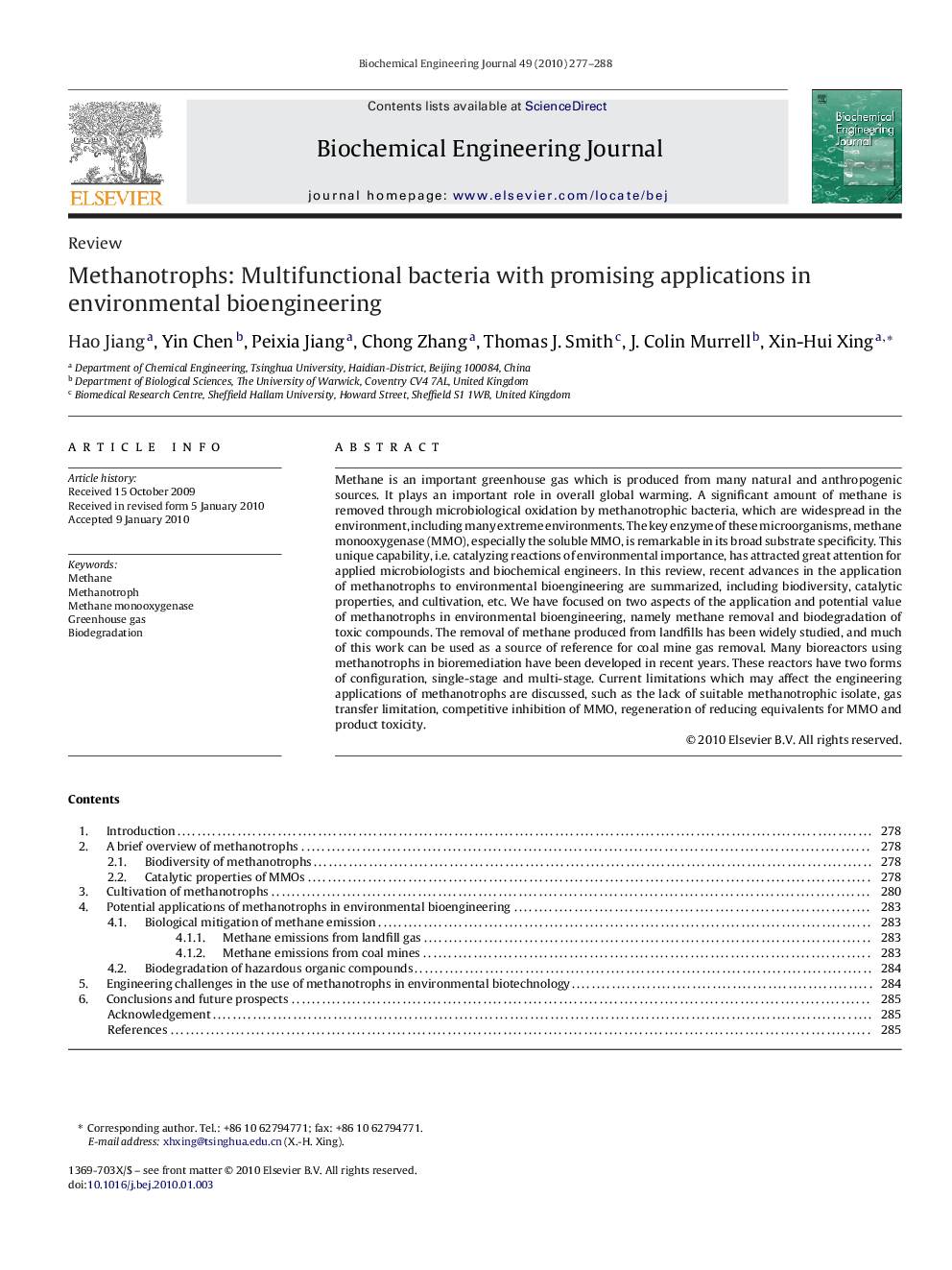| Article ID | Journal | Published Year | Pages | File Type |
|---|---|---|---|---|
| 3972 | Biochemical Engineering Journal | 2010 | 12 Pages |
Methane is an important greenhouse gas which is produced from many natural and anthropogenic sources. It plays an important role in overall global warming. A significant amount of methane is removed through microbiological oxidation by methanotrophic bacteria, which are widespread in the environment, including many extreme environments. The key enzyme of these microorganisms, methane monooxygenase (MMO), especially the soluble MMO, is remarkable in its broad substrate specificity. This unique capability, i.e. catalyzing reactions of environmental importance, has attracted great attention for applied microbiologists and biochemical engineers. In this review, recent advances in the application of methanotrophs to environmental bioengineering are summarized, including biodiversity, catalytic properties, and cultivation, etc. We have focused on two aspects of the application and potential value of methanotrophs in environmental bioengineering, namely methane removal and biodegradation of toxic compounds. The removal of methane produced from landfills has been widely studied, and much of this work can be used as a source of reference for coal mine gas removal. Many bioreactors using methanotrophs in bioremediation have been developed in recent years. These reactors have two forms of configuration, single-stage and multi-stage. Current limitations which may affect the engineering applications of methanotrophs are discussed, such as the lack of suitable methanotrophic isolate, gas transfer limitation, competitive inhibition of MMO, regeneration of reducing equivalents for MMO and product toxicity.
